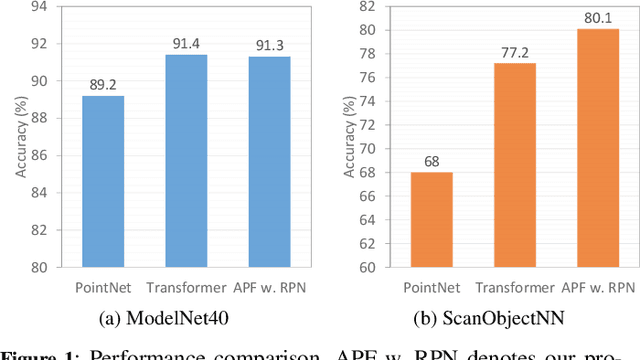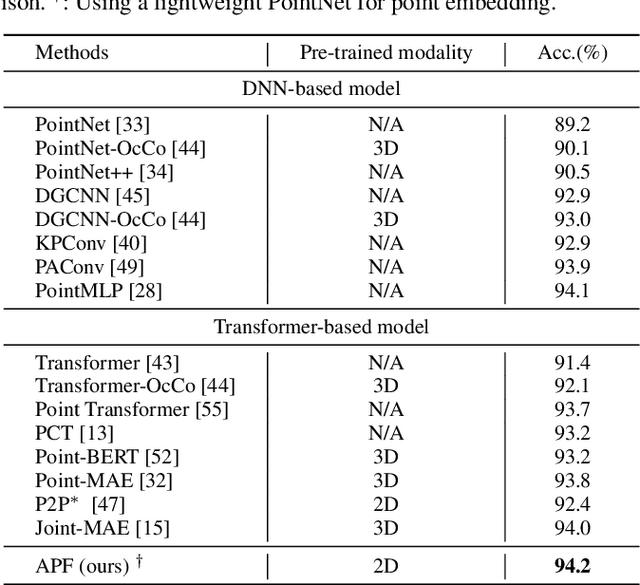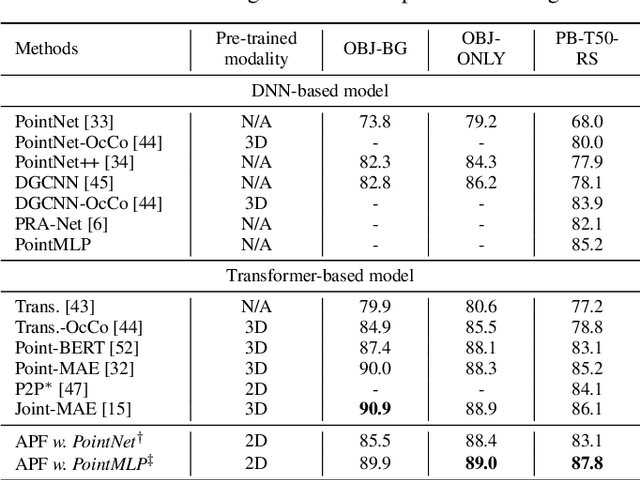Da Li
Kwai Keye-VL Technical Report
Jul 02, 2025Abstract:While Multimodal Large Language Models (MLLMs) demonstrate remarkable capabilities on static images, they often fall short in comprehending dynamic, information-dense short-form videos, a dominant medium in today's digital landscape. To bridge this gap, we introduce \textbf{Kwai Keye-VL}, an 8-billion-parameter multimodal foundation model engineered for leading-edge performance in short-video understanding while maintaining robust general-purpose vision-language abilities. The development of Keye-VL rests on two core pillars: a massive, high-quality dataset exceeding 600 billion tokens with a strong emphasis on video, and an innovative training recipe. This recipe features a four-stage pre-training process for solid vision-language alignment, followed by a meticulous two-phase post-training process. The first post-training stage enhances foundational capabilities like instruction following, while the second phase focuses on stimulating advanced reasoning. In this second phase, a key innovation is our five-mode ``cold-start'' data mixture, which includes ``thinking'', ``non-thinking'', ``auto-think'', ``think with image'', and high-quality video data. This mixture teaches the model to decide when and how to reason. Subsequent reinforcement learning (RL) and alignment steps further enhance these reasoning capabilities and correct abnormal model behaviors, such as repetitive outputs. To validate our approach, we conduct extensive evaluations, showing that Keye-VL achieves state-of-the-art results on public video benchmarks and remains highly competitive on general image-based tasks (Figure 1). Furthermore, we develop and release the \textbf{KC-MMBench}, a new benchmark tailored for real-world short-video scenarios, where Keye-VL shows a significant advantage.
A Survey of Link Prediction in N-ary Knowledge Graphs
Jun 10, 2025Abstract:N-ary Knowledge Graphs (NKGs) are a specialized type of knowledge graph designed to efficiently represent complex real-world facts. Unlike traditional knowledge graphs, where a fact typically involves two entities, NKGs can capture n-ary facts containing more than two entities. Link prediction in NKGs aims to predict missing elements within these n-ary facts, which is essential for completing NKGs and improving the performance of downstream applications. This task has recently gained significant attention. In this paper, we present the first comprehensive survey of link prediction in NKGs, providing an overview of the field, systematically categorizing existing methods, and analyzing their performance and application scenarios. We also outline promising directions for future research.
LifeIR at the NTCIR-18 Lifelog-6 Task
May 27, 2025Abstract:In recent years, sharing lifelogs recorded through wearable devices such as sports watches and GoPros, has gained significant popularity. Lifelogs involve various types of information, including images, videos, and GPS data, revealing users' lifestyles, dietary patterns, and physical activities. The Lifelog Semantic Access Task(LSAT) in the NTCIR-18 Lifelog-6 Challenge focuses on retrieving relevant images from a large scale of users' lifelogs based on textual queries describing an action or event. It serves users' need to find images about a scenario in the historical moments of their lifelogs. We propose a multi-stage pipeline for this task of searching images with texts, addressing various challenges in lifelog retrieval. Our pipeline includes: filtering blurred images, rewriting queries to make intents clearer, extending the candidate set based on events to include images with temporal connections, and reranking results using a multimodal large language model(MLLM) with stronger relevance judgment capabilities. The evaluation results of our submissions have shown the effectiveness of each stage and the entire pipeline.
UniSymNet: A Unified Symbolic Network Guided by Transformer
May 09, 2025Abstract:Symbolic Regression (SR) is a powerful technique for automatically discovering mathematical expressions from input data. Mainstream SR algorithms search for the optimal symbolic tree in a vast function space, but the increasing complexity of the tree structure limits their performance. Inspired by neural networks, symbolic networks have emerged as a promising new paradigm. However, most existing symbolic networks still face certain challenges: binary nonlinear operators $\{\times, \div\}$ cannot be naturally extended to multivariate operators, and training with fixed architecture often leads to higher complexity and overfitting. In this work, we propose a Unified Symbolic Network that unifies nonlinear binary operators into nested unary operators and define the conditions under which UniSymNet can reduce complexity. Moreover, we pre-train a Transformer model with a novel label encoding method to guide structural selection, and adopt objective-specific optimization strategies to learn the parameters of the symbolic network. UniSymNet shows high fitting accuracy, excellent symbolic solution rate, and relatively low expression complexity, achieving competitive performance on low-dimensional Standard Benchmarks and high-dimensional SRBench.
Bridging Queries and Tables through Entities in Table Retrieval
Apr 09, 2025Abstract:Table retrieval is essential for accessing information stored in structured tabular formats; however, it remains less explored than text retrieval. The content of the table primarily consists of phrases and words, which include a large number of entities, such as time, locations, persons, and organizations. Entities are well-studied in the context of text retrieval, but there is a noticeable lack of research on their applications in table retrieval. In this work, we explore how to leverage entities in tables to improve retrieval performance. First, we investigate the important role of entities in table retrieval from a statistical perspective and propose an entity-enhanced training framework. Subsequently, we use the type of entities to highlight entities instead of introducing an external knowledge base. Moreover, we design an interaction paradigm based on entity representations. Our proposed framework is plug-and-play and flexible, making it easy to integrate into existing table retriever training processes. Empirical results on two table retrieval benchmarks, NQ-TABLES and OTT-QA, show that our proposed framework is both simple and effective in enhancing existing retrievers. We also conduct extensive analyses to confirm the efficacy of different components. Overall, our work provides a promising direction for elevating table retrieval, enlightening future research in this area.
Seeing and Reasoning with Confidence: Supercharging Multimodal LLMs with an Uncertainty-Aware Agentic Framework
Mar 11, 2025Abstract:Multimodal large language models (MLLMs) show promise in tasks like visual question answering (VQA) but still face challenges in multimodal reasoning. Recent works adapt agentic frameworks or chain-of-thought (CoT) reasoning to improve performance. However, CoT-based multimodal reasoning often demands costly data annotation and fine-tuning, while agentic approaches relying on external tools risk introducing unreliable output from these tools. In this paper, we propose Seeing and Reasoning with Confidence (SRICE), a training-free multimodal reasoning framework that integrates external vision models with uncertainty quantification (UQ) into an MLLM to address these challenges. Specifically, SRICE guides the inference process by allowing MLLM to autonomously select regions of interest through multi-stage interactions with the help of external tools. We propose to use a conformal prediction-based approach to calibrate the output of external tools and select the optimal tool by estimating the uncertainty of an MLLM's output. Our experiment shows that the average improvement of SRICE over the base MLLM is 4.6% on five datasets and the performance on some datasets even outperforms fine-tuning-based methods, revealing the significance of ensuring reliable tool use in an MLLM agent.
Tailoring Table Retrieval from a Field-aware Hybrid Matching Perspective
Mar 04, 2025Abstract:Table retrieval, essential for accessing information through tabular data, is less explored compared to text retrieval. The row/column structure and distinct fields of tables (including titles, headers, and cells) present unique challenges. For example, different table fields have varying matching preferences: cells may favor finer-grained (word/phrase level) matching over broader (sentence/passage level) matching due to their fragmented and detailed nature, unlike titles. This necessitates a table-specific retriever to accommodate the various matching needs of each table field. Therefore, we introduce a Table-tailored HYbrid Matching rEtriever (THYME), which approaches table retrieval from a field-aware hybrid matching perspective. Empirical results on two table retrieval benchmarks, NQ-TABLES and OTT-QA, show that THYME significantly outperforms state-of-the-art baselines. Comprehensive analyses confirm the differing matching preferences across table fields and validate the design of THYME.
Dual-Function Beamforming Design For Multi-Target Localization and Reliable Communications
Jan 13, 2025



Abstract:This paper investigates the transmit beamforming design for multiple-input multiple-output systems to support both multi-target localization and multi-user communications. To enhance the target localization performance, we derive the asymptotic Cram\'{e}r-Rao bound (CRB) for target angle estimation by assuming that the receive array is linear and uniform. Then we formulate a beamforming design problem based on minimizing an upper bound on the asymptotic CRB (which is shown to be equivalent to {maximizing} the harmonic mean of the weighted beampattern responses at the target directions). Moreover, we impose a constraint on the SINR of each received communication signal to guarantee reliable communication performance. Two iterative algorithms are derived to tackle the non-convex design problem: one is based on the alternating direction method of multipliers, and the other uses the majorization-minimization technique to solve an equivalent minimax problem. Numerical results show that, through elaborate dual-function beamforming matrix design, the proposed algorithms can simultaneously achieve superior angle estimation performance as well as high-quality multi-user communications.
ViSymRe: Vision-guided Multimodal Symbolic Regression
Dec 15, 2024Abstract:Symbolic regression automatically searches for mathematical equations to reveal underlying mechanisms within datasets, offering enhanced interpretability compared to black box models. Traditionally, symbolic regression has been considered to be purely numeric-driven, with insufficient attention given to the potential contributions of visual information in augmenting this process. When dealing with high-dimensional and complex datasets, existing symbolic regression models are often inefficient and tend to generate overly complex equations, making subsequent mechanism analysis complicated. In this paper, we propose the vision-guided multimodal symbolic regression model, called ViSymRe, that systematically explores how visual information can improve various metrics of symbolic regression. Compared to traditional models, our proposed model has the following innovations: (1) It integrates three modalities: vision, symbol and numeric to enhance symbolic regression, enabling the model to benefit from the strengths of each modality; (2) It establishes a meta-learning framework that can learn from historical experiences to efficiently solve new symbolic regression problems; (3) It emphasizes the simplicity and structural rationality of the equations rather than merely numerical fitting. Extensive experiments show that our proposed model exhibits strong generalization capability and noise resistance. The equations it generates outperform state-of-the-art numeric-only baselines in terms of fitting effect, simplicity and structural accuracy, thus being able to facilitate accurate mechanism analysis and the development of theoretical models.
Adapt PointFormer: 3D Point Cloud Analysis via Adapting 2D Visual Transformers
Jul 18, 2024



Abstract:Pre-trained large-scale models have exhibited remarkable efficacy in computer vision, particularly for 2D image analysis. However, when it comes to 3D point clouds, the constrained accessibility of data, in contrast to the vast repositories of images, poses a challenge for the development of 3D pre-trained models. This paper therefore attempts to directly leverage pre-trained models with 2D prior knowledge to accomplish the tasks for 3D point cloud analysis. Accordingly, we propose the Adaptive PointFormer (APF), which fine-tunes pre-trained 2D models with only a modest number of parameters to directly process point clouds, obviating the need for mapping to images. Specifically, we convert raw point clouds into point embeddings for aligning dimensions with image tokens. Given the inherent disorder in point clouds, in contrast to the structured nature of images, we then sequence the point embeddings to optimize the utilization of 2D attention priors. To calibrate attention across 3D and 2D domains and reduce computational overhead, a trainable PointFormer with a limited number of parameters is subsequently concatenated to a frozen pre-trained image model. Extensive experiments on various benchmarks demonstrate the effectiveness of the proposed APF. The source code and more details are available at https://vcc.tech/research/2024/PointFormer.
 Add to Chrome
Add to Chrome Add to Firefox
Add to Firefox Add to Edge
Add to Edge